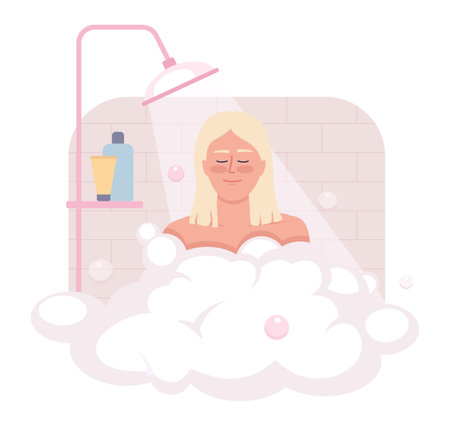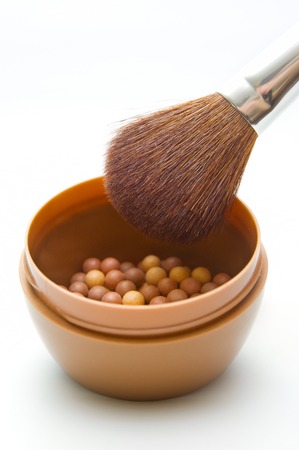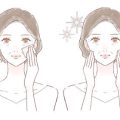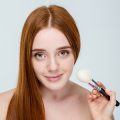1. Introduction: The Brush Debate
Walk into any beauty store in the U.S., and you’ll see an endless variety of makeup brushes—some labeled “natural,” others “synthetic.” But what’s the real difference, and why does it matter for makeup lovers here? The debate between natural and synthetic makeup brushes has been a hot topic in the beauty community for years, with fans on both sides passionately sharing their reasons. From how the brushes feel against your skin to how they apply product, the choice between natural and synthetic bristles can affect your whole makeup experience.
For American beauty enthusiasts, this decision isn’t just about trends—it’s about personal values, budgets, allergies, and even animal welfare. Some shoppers prioritize cruelty-free options or want vegan tools, while others are all about achieving that perfect blend or flawless foundation finish. With so many factors to consider, it’s easy to feel overwhelmed by all the options on the shelves.
Here’s a quick look at some key differences that often come up in this ongoing brush debate:
| Natural Brushes | Synthetic Brushes | |
|---|---|---|
| Main Material | Animal hair (like goat, squirrel, pony) | Nylon, taklon, other man-made fibers |
| Common Uses | Powder products (blush, bronzer, eyeshadow) | Creams and liquids (foundation, concealer), also powders |
| Allergy Concerns | Potential for animal hair allergies | Hypoallergenic (good for sensitive skin) |
| Cruelty-Free/Vegan? | No (unless specified as cruelty-free) | Yes (most are vegan and cruelty-free) |
| Price Range | Tends to be higher (luxury feel) | Often more affordable; wide range of prices |
The natural vs. synthetic brush conversation is about more than just what’s trendy—it’s about finding what fits your lifestyle and values. In the next sections, we’ll break down the pros and cons of each type so you can decide which side you’re on in this brush debate!
2. What Are Natural Makeup Brushes?
Natural makeup brushes are beauty tools made using bristles that come from animal hair, most commonly from goats, squirrels, or ponies. These brushes have been a staple for many years among American makeup artists and beauty enthusiasts, known for their soft feel and unique ability to pick up and distribute powder products.
Materials Used in Natural Brushes
The main thing that sets natural makeup brushes apart is the bristle material. Here’s a quick look at some of the common animal hairs used:
| Animal Hair Type | Main Features | Common Uses |
|---|---|---|
| Goat Hair | Soft, durable, holds pigment well | Blush, powder, eyeshadow blending |
| Squirrel Hair | Ultra-soft, delicate touch | Highlighting, finishing powders |
| Pony Hair | Firm yet flexible, smooth application | Brow brushes, eyeshadow application |
The Traditional Appeal of Natural Brushes in the U.S.
For decades, professional American makeup artists have favored natural brushes for their performance with powder-based products like loose setting powder, blush, bronzer, and eyeshadow. The porous structure of animal hair helps pick up and deposit pigments smoothly, making them perfect for seamless blending and buildable coverage. Many makeup lovers also appreciate the classic craftsmanship and luxurious feel that comes with high-quality natural brushes.
A Few Things to Keep in Mind
If you’re considering natural brushes, remember they may require a little extra care when cleaning to keep them soft and long-lasting. Also, because they’re made from animal hair, those who prefer vegan or cruelty-free options might want to explore synthetic alternatives instead.

3. What Are Synthetic Makeup Brushes?
Synthetic makeup brushes are crafted from man-made fibers instead of natural animal hair. Over the years, these brushes have become a go-to option for many beauty lovers across the U.S., thanks to their affordability, ethical appeal, and advanced performance.
What Makes a Brush Synthetic?
A synthetic brush is made from non-animal materials, most commonly plastic-based fibers. These fibers are designed to mimic the texture and flexibility of natural hair while offering some unique benefits—like less product absorption and easier cleaning.
Common Types of Synthetic Fibers
| Fiber Type | Main Features | Typical Uses |
|---|---|---|
| Nylon | Smooth, durable, holds shape well | Foundation, concealer, cream products |
| Taklon | Soft, hypoallergenic, cruelty-free | Powder, blush, eyeshadow application |
| Polyester blends | Flexible, cost-effective, easy to clean | Lip brushes, liner brushes, detail work |
How Innovation Has Changed the Game in the U.S.
Years ago, synthetic brushes had a reputation for being stiff or streaky. But today’s technology has completely changed that! American brands now offer synthetic brushes that feel super soft and rival (or even beat) natural bristles in performance. Thanks to advances in fiber design and brush shaping, these tools pick up pigment beautifully and work seamlessly with both powder and liquid products. Plus, they’re widely available at every price point—from drugstore finds to high-end favorites—making them accessible for everyone who wants quality beauty tools without compromise.
4. Performance: How Do They Stack Up?
How Natural and Synthetic Brushes Handle Different Makeup Products
When it comes to getting that flawless finish, the type of makeup brush you use can make a real difference in your daily routine. Let’s break down how natural and synthetic brushes perform with different types of products, so you can pick what works best for your unique style and needs.
Applying Powders vs. Creams & Liquids
| Brush Type | Powder Products (blush, bronzer, eyeshadow) |
Cream/Liquid Products (foundation, concealer, cream blush) |
|---|---|---|
| Natural Hair | Excellent for blending and picking up powders; creates soft, diffused looks | Tends to absorb more product, which can waste liquids and creams; not ideal for full coverage |
| Synthetic Fibers | Works well but may not blend as seamlessly as natural hair; newer synthetics have improved a lot | Best for applying creams and liquids; smooth application without soaking up extra product |
Practical Tips for Everyday American Makeup Routines
- If you love powder-based looks: Natural brushes are often the go-to for a soft, airbrushed finish—think classic American “no makeup” makeup or a sun-kissed glow.
- If you’re into liquid foundation or bold cream blush: Synthetic brushes make application easier and less messy, perfect for busy mornings or touch-ups at work or school.
- If you want one set for everything: Consider high-quality synthetic brushes. Many modern brands have engineered these to work almost as well as natural hair across all product types—and they’re cruelty-free!
Quick Comparison: Pros & Cons Table
| Natural Brushes | Synthetic Brushes | |
|---|---|---|
| Best For | Powers (blush, bronzer, shadow) | Creams & liquids (foundation, concealer) |
| User Experience | Softer feel, blends edges beautifully | Smooth application, easy to clean, less product waste |
| Versatility | Mainly powders; struggles with creams/liquids | Works well with all types but especially good with wet formulas |
| Cruelty-Free/Ethics | No (unless specified as ethically sourced) | Yes—vegan and cruelty-free options widely available in the U.S. |
5. Ethics and Allergies: What Matters to You?
When it comes to choosing between natural and synthetic makeup brushes, more and more people in the U.S. are thinking about ethics and personal well-being, not just beauty results. Let’s break down what matters most—animal welfare, vegan options, and allergy concerns—and see how these issues are shaping American beauty culture.
Animal Welfare & Cruelty-Free Choices
Natural brushes are usually made from animal hair like goat, squirrel, or pony. This raises questions about animal treatment and sourcing. If you care about animals, you might want to look for brands that highlight cruelty-free practices or consider switching to synthetic brushes entirely. Synthetic brushes are made from materials like nylon or taklon—no animals involved!
Vegan Options
The demand for vegan beauty products is booming in the U.S., with many brands proudly labeling their synthetic brushes as “100% vegan.” This means no animal hair and often no animal-derived glues or dyes. If you’re vegan or just want to support cruelty-free brands, there are more choices than ever.
Ethical Comparison Table
| Brush Type | Animal Welfare | Vegan-Friendly | Cruelty-Free Options |
|---|---|---|---|
| Natural | No (unless specifically stated) | No | Rare |
| Synthetic | Yes (no animal use) | Yes | Common |
Allergy Concerns & Sensitive Skin
If you have allergies or sensitive skin, synthetic brushes might be your best bet. Animal hair can sometimes cause reactions or harbor bacteria if not cleaned well. Synthetic fibers are less likely to trigger allergies, making them popular among people with sensitive skin or conditions like eczema.
Trends in U.S. Beauty Culture
The American beauty scene is leaning hard into products that are both ethical and gentle on the skin. “Clean,” “cruelty-free,” and “vegan” are buzzwords you’ll find everywhere—from social media influencers to big-name retailers like Sephora and Ulta. Brands that offer transparency about their materials and processes tend to win over younger consumers who value both ethical shopping and self-expression.
6. Price and Longevity
When it comes to makeup brushes, price and longevity are big factors for most shoppers—especially if you’re browsing shelves at Ulta, Sephora, or even your local Target. Here’s a simple breakdown to help you figure out what fits your needs and budget:
Cost Comparison: Natural vs. Synthetic Brushes
| Type | Average Price Range (per brush) | Where You’ll Find Them |
|---|---|---|
| Natural Hair Brushes | $15–$50+ | High-end brands like MAC, Bobbi Brown, Sephora Collection Luxe |
| Synthetic Brushes | $5–$30 | EcoTools, Real Techniques, e.l.f., Morphe, Sonia Kashuk at Target |
Why the price difference? Natural hair brushes use animal hair (like goat or sable), which costs more to source and process. Synthetic brushes are made from man-made fibers (such as nylon or Taklon), so they’re easier and cheaper to manufacture.
Durability and Upkeep
| Natural Brushes | Synthetic Brushes | |
|---|---|---|
| Lifespan with Regular Use* | 1–2 years, sometimes longer with gentle care | 2–5 years, often longer thanks to resilient fibers |
| Cleaning Frequency** | Needs gentle cleaning every 1–2 weeks; avoid soaking in water too long as natural hair can shed or dry out. | Easier to clean and sanitize; less likely to hold onto product or bacteria. Can handle more frequent washing. |
| Main Upkeep Tips | Use a mild brush cleanser or baby shampoo; reshape bristles while damp; air-dry flat. | Can use regular brush cleaners or even gentle soap; dries quickly and maintains shape well. |
*Actual lifespan depends on how often you use them and how you care for them.
**Most U.S. makeup artists recommend cleaning all brushes at least weekly for best hygiene.
What Shoppers Notice at U.S. Beauty Stores
If you shop at major U.S. beauty retailers, you’ll probably see synthetic brushes taking over the shelves—partly because they’re more affordable, vegan-friendly, and low-maintenance. Many popular brands offer full sets of synthetic brushes that perform just as well as pricier natural ones. However, some high-end lines still carry natural options for pros who want that “classic” feel.
7. Which Brush is Best for You?
When it comes to choosing between natural and synthetic makeup brushes, there’s no one-size-fits-all answer. Your ideal brush set depends on your personal values, budget, skin needs, and makeup style. Let’s break down the key factors so you can pick what feels right for you.
Consider What Matters Most to You
| Factor | Natural Brushes | Synthetic Brushes |
|---|---|---|
| Ethics & Cruelty-Free | May use animal hair (not vegan/cruelty-free) | Vegan and cruelty-free options available |
| Budget | Tend to be more expensive | Usually more affordable |
| Performance with Makeup Types | Great for powders; soft blending | Work well with creams, liquids, and powders; less product absorption |
| Sensitivity & Allergies | Some may cause irritation (animal hair) | Hypoallergenic and safe for sensitive skin |
| Maintenance & Cleaning | Require gentle care; longer drying time | Easier to clean; dries quickly |
Your Makeup Routine and Needs
If you love a full glam look with lots of liquid foundation or cream products, synthetic brushes might be your best friend—they don’t soak up as much product, making blending easier and saving you money in the long run. On the flip side, if you’re all about soft powder finishes or want that seamless blend for eyeshadow, a few natural brushes could be worth the splurge—if you’re comfortable with their sourcing.
Mix and Match to Personalize Your Kit
You don’t have to commit to just one type! Many American beauty lovers build a collection that mixes both natural and synthetic brushes. This way, you can enjoy the benefits of each type without feeling boxed in.
Empowering Your Choice—It’s All About You!
No matter which brush you choose, remember: it’s about what makes you feel good and fits your lifestyle. Whether you prioritize vegan products, want a wallet-friendly option, or simply love experimenting with new looks, trust yourself to pick the brushes that support your beauty journey. There’s no wrong answer—just what works best for you.


